Software Development Life Cycle (SDLC) models are structured plans for designing, developing, and testing software applications. There are several different models to choose from, but all help teams build higher-quality products faster and at lower cost by providing a checklist of key activities for the development process. The SDLC is a list of consecutive phases, each with a specific purpose.
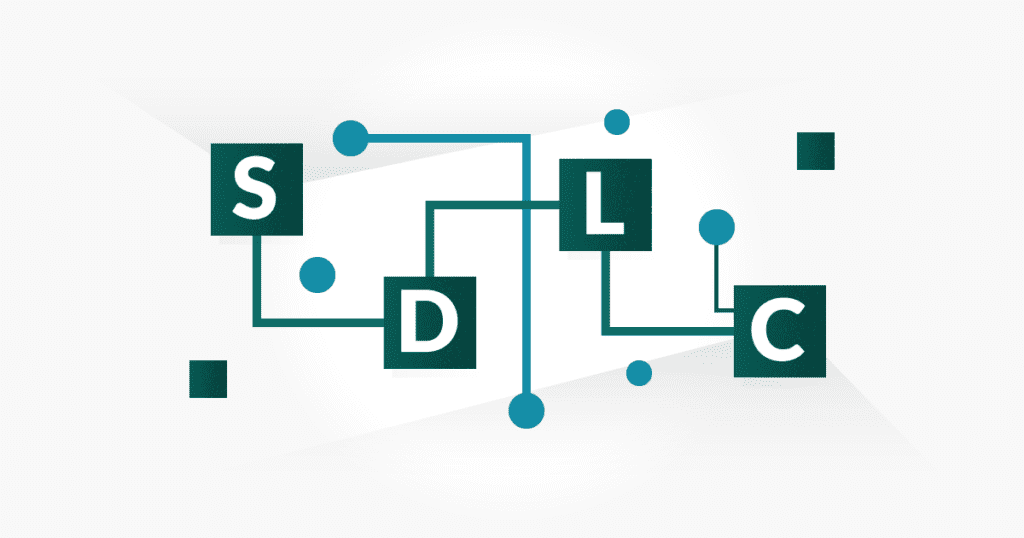
Waterfall is the traditional SDLC model. However, over the years, teams developed new working practices and modified the SDLC to fit their needs. There are now more than fifty SDLC models in use today that all share the same goal of bringing structure to the process of software building software.
This article outlines six of the most common Software Development Life Cycle models and notes the pros and cons of each methodology.
1. Waterfall
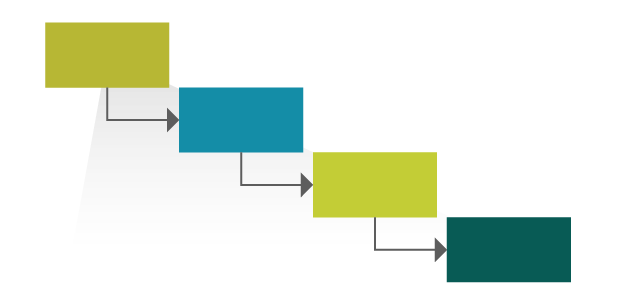
The waterfall concept, which is a linear, sequential approach to software development, was introduced in 1970 by Dr. Winston W. Royce. His paper called for a ‘simpler method’ for developing software but acknowledged practical limitations at scale. Citing Royce and his ‘”waterfall” of development activities,’ in their 1976 paper, Thomas E. Bell and T.A. Thayer inadvertently named the methodology.
Both publications shared a series of steps to help deliver projects on time and within budget, emphasizing the importance of starting projects with clearly defined requirements. Teams worldwide keenly adopted the waterfall method, which remains the most traditional way of building software. However, although still in use today, new SDLC models have gained interest over the past couple of decades, especially from larger software development teams.
The waterfall model includes well-defined phases: requirements analysis, design, development, testing, deployment, and maintenance. Only when a phase is complete can the next phase begin, and so on. Many teams have found this rigid, linear workflow too limiting, leading to other SDLC models we discuss in this article.
Pros
- Well-defined deliverables: Deliverables and milestones are very clear, which makes it easy for the entire team to be aligned and the whole process easy to understand and follow.
- Information is accessible: With an emphasis on documentation, information is easily accessible and transferable across teams.
Cons
- Changes are difficult: Due to the linear nature of waterfall, returning to previous phases is discouraged, so making changes is difficult.
- Delayed feedback: Because testing occurs at the end of the life cycle, feedback on the application’s functionality and reliability is delayed, which can cause further delays if significant changes are needed.
- Longer cycles: Development cycles are longer because each phase must be completed before starting the next, which can cause delays.
2. Agile
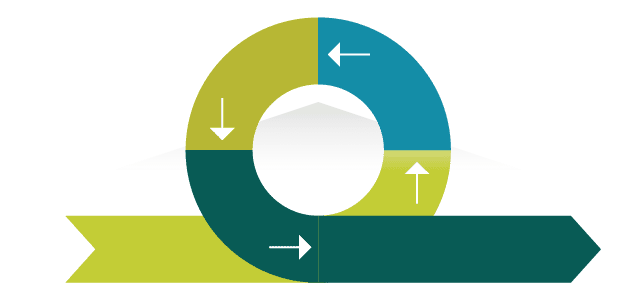
The agile methodology was formally established in 2001. However, teams across different industries had started to adopt agile practices during the previous decade after creating more efficient ways of working.
In stark contrast to the waterfall SDLC model, agile focuses on short iterative cycles and relies on the team’s knowledge rather than exhaustive documentation. Iterative, in context, provides an initial solution that is refined through several versions or iterations until the solution is sufficient. This enables agile to be highly flexible and teams to move and make changes faster.
With agile development, software teams break up the workload into much smaller units of work, often referred to as “sprints.” A sprint might be a week or up to four weeks. Whatever the length, the team will know the sprint’s end date, and that they are accountable for accomplishing the work they agreed to.
Customer collaboration and teamwork are highly encouraged in agile, as this is where requirements and solutions are discovered. Agile is very popular among software teams today, allowing them to ship new features much faster.
Pros
- Flexibility and adaptability: Agile allows and encourages requirements, priorities, and even market conditions to be reassessed. This rate of flexibility ensures that the project always points in the right direction.
- Faster access to usable functionality: Because this SDLC model involves developing in small packets of work, customers can receive usable tools and features faster, and defects can be resolved more quickly.
- Customer collaboration: Agile encourages frequent cooperation with customers, which ensures feature development based on their ever-changing needs. This cooperation also helps strengthen relationships with customers.
Cons
- Potential scope creep: Agile encourages regular feedback and rapid changes. However, this level of flexibility can cause scope creep, where unplanned extra features are introduced. Unclear priorities and constantly changing requirements can bring deadline delays that could prove costly to the business and the customer.
- Unclear objectives: If objectives are unclear, you might have teams aiming toward different goals. Misalignments can cause frustration with teams and customers.
- Lack of documentation: Agile development prioritizes functioning software over writing documentation. This focus can create challenges, especially in regulated industries that require documentation. Less documentation also makes information transfer more difficult.
3. Spiral
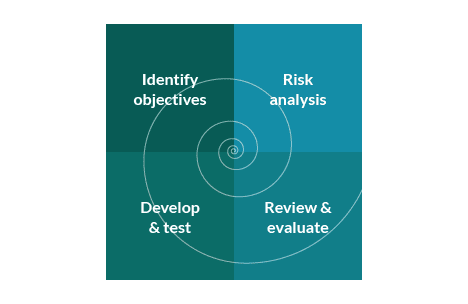
The spiral model was introduced in 1988 by Barry Boehm after his experience working on large government software projects. He saw a need for a more flexible way of working than the waterfall method that would also prioritize risk reduction, as government projects are susceptible to risk.
The spiral model is a hybrid of the waterfall and the iterative SDLC models. Spiral is a development process where software teams gradually and repeatedly cycle through a series of stages. Each stage builds upon the previous one until a final version is produced.
The spiral model is suitable for large, complex projects with uncertainties in the project requirements and where risk reduction is critical.
Pros
- Risk reduction: Spiral’s central focus is risk management.
- Flexible: This model allows for changes in requirements, enabling new functionality to be added in later iterations.
- Early prototyping: Producing early functional software provides feedback to drive decisions throughout the project.
Cons
- Risk analysis requires experts: Risk analysis depends on experts understanding the importance of the various risks to stakeholders.
- Complex: Spiral can move quickly and be challenging to understand, especially for stakeholders who might be new to software development.
4. V-Model
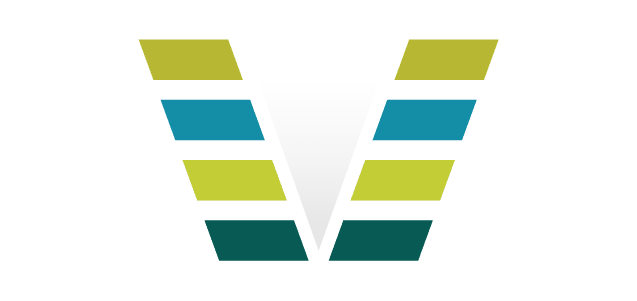
The V-Model, or the verification and validation model, is a software development life cycle model that expands the traditional waterfall model by introducing more testing throughout the development process. With the V-Model, a testing phase is associated directly with each phase in the SDLC. This method helps teams find bugs earlier in the process, allowing more time for testing later.
Testers and developers work closely together during each phase, which aids quality in software building. Unit, integration, system, and acceptance testing are all essential in the V-Model.
Pros
- Easy to understand: The V-Model is a very clear, structured process, making it easy to follow and understand what needs to be done in each phase.
- Earlier defect discovery: Because testing happens during every phase instead of one big testing phase at the end, bugs are found and resolved earlier in the process.
- Risk reduction: Validation occurs steadily throughout the life cycle, so risks are identified and dealt with earlier, minimizing or removing any potential impact.
Cons
- Highly rigid: Similar to the waterfall method, the V-Model is rigid, which leaves little scope for flexibility or changes in requirements.
- Limited customer involvement: Customers are less involved than with other models, which can lead to misaligned expectations between the software development team and the client.
5. RAD
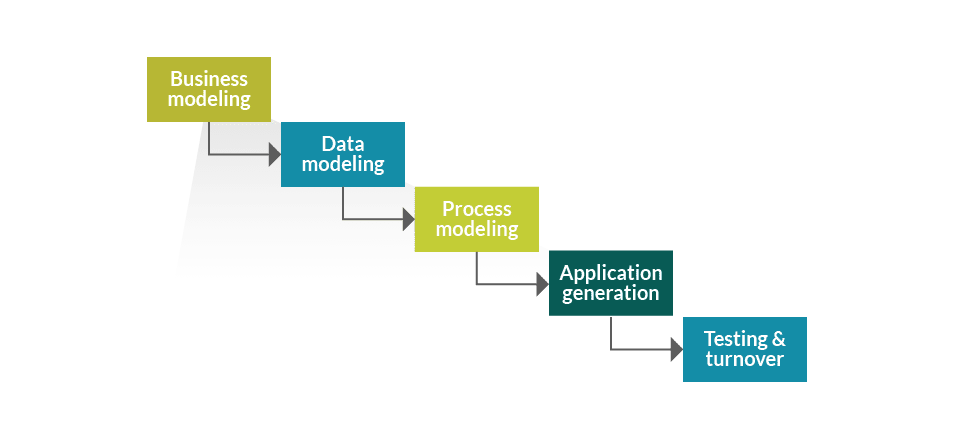
RAD (Rapid Application Development) is an incremental approach to developing software that favors rapid prototyping and quick feedback over long planning phases and robust documentation practices.
Each work phase is divided into multiple standalone units that are developed one at a time. RAD aims to deliver initial prototypes and improve the idea incrementally through each iteration. Iterations are time-boxed, which helps with planning, estimating, and keeping the project on schedule.
Testing happens concurrently with the development process to ensure the software meets quality standards and requirements. Because the focus is on speed, testing tends to be less formal.
Pros
- Customer involvement: The RAD model encourages participation and collaboration between the development team and users, which helps the final product meet client expectations.
- Flexible and adaptive: The RAD model is great for projects that see numerous changes in requirements.
Cons
- Scope creep: Too much flexibility in the process can lead to scope creep, resulting in project delays and increased costs.
- Technical debt: Speed has priority in this software development approach which can leave a trail of unfinished work or sub-optimal code.
- Dependent on user involvement: There might be misunderstandings and delays if users aren’t responsive or engaged throughout the development process.
6. Prototype model
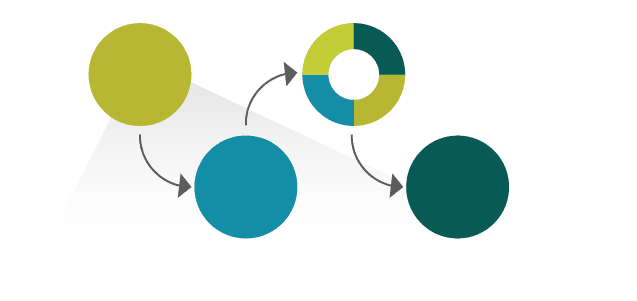
The prototype model is an iterative approach to building software. It starts with a simplified application version that users can evaluate and provide feedback on. As with all prototypes, it is incomplete and still needs engineering, but this initial version gives users an idea of what is possible and allows them to provide early feedback.
The prototype SDLC model’s three core purposes are feedback, development, and testing. This rapid feedback loop is central to the prototype model because early, close collaboration with users gives the development team insights that inform following iterations.
This model is great for scenarios when requirements are unclear. As customers evaluate the prototype, they learn what they need from it, which brings more clarity to the requirements and provides directions the development team needs to pursue.
Pros
- Rapid feedback loop: Early and regular user feedback clarifies the requirements and functionality needed.
- Easily detect missing functionality: Prototyping helps identify gaps in the functionality, as users can identify missing features early on.
- Customer satisfaction: Customers feel valued and heard when they can work closely with the engineering team, which ultimately results in a product that aligns more closely with their expectations.
Cons
- Time-consuming: While prototyping is meant to move quickly, getting through several rounds of prototypes can take more time in the long run.
- Misunderstanding and confusion: Customers get access to an early prototype, so if the final version behaves differently from the prototype, they might get confused and reject it.
Conclusion
While the software development life cycle is employed in many different models, they all share the common aim of helping teams operationalize their work. Understanding how the different SDLC models vary is essential, especially if it’s your role to determine how your team works. The model you choose will serve as a roadmap for your team. It will provide structure, clarity, and efficiency to the software-building process.
All models have strengths and weaknesses, so weighing them carefully when making your choice is important. Team size, industry type, product type, and company culture are all relevant considerations when deciding which SDLC model to use. You might also find that a hybrid method works best for your team.
Whichever one you choose for your specific project, document your process and share how your team works so everyone can align with the SDLC model you follow.

